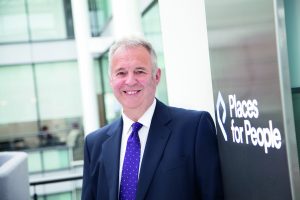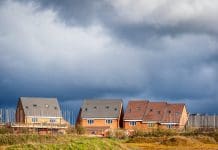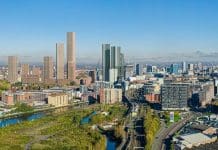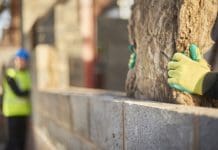Places for People has launched a new design guide. Created in conjunction with global engineering and design consultancy Arup, the Places Design Guide proposes the universal qualities and principles of great places. Places for People group chief executive David Cowans talks more about the future of developing neighbourhoods and the considerations that need to be made in a post-Covid world
Our Places for People mission is simple: we’re committed to creating places that work for everyone. That means challenging the norm and changing the ways in which places are designed, built and managed.
Our work in doing this in recent years has seen us create thousands of new homes in great neighbourhoods; places like Brooklands in Milton Keynes and Port Loop in Birmingham, which each offer choices that improve the lives of those who live there.
But there’s still much work to be done – especially in a post-Covid world. That’s why we’ve collaborated with Arup to create our guide, What Makes Great Places for People? which sets the scene for future communities.
Changing needs for a changing population
The way that we live is fundamentally changing and that means we have to rethink our approach to creating mixed-use, mixed-tenure places.
Even before the pandemic, the demographic make-up of the UK was evolving; the population is projected to increase to 73m by 2041, while the number of people in the 65+ age bracket is projected rise from 18% to 26% of the total population.
As developers and placemakers, we cannot ignore how differently people now live – and how much that will change in the future. There are environmental considerations and commitment to zero carbon communities, societal trends that allow people to live and work differently in their homes, and of course the simple changing demographic of households.
But how do developers address this? We believe the answer lies in creating mixed-use and mixed-tenure places that lay the foundation for social cohesion, economic prosperity and environmental sustainability.
Our guide champions ideas for making this a reality, exploring just how we can build new developments that work, manage existing places to ensure they benefit all who live there and how we can generally create commercially viable great places for people.
The rule of six
The guide is based on six key principles – each of which address how we should shape new neighbourhoods. The principles aim to be universal, inclusive and relevant to all people, irrespective of their age, gender, background, family structure or socio-economic status.
Our Places for People and Arup teams have created these rules by assimilating our experience, scrutinising the factors that are driving demographic, social and environmental change – including the impact of Covid-19. It addresses the complex social and environmental landscape against which we are now creating our neighbourhoods.
Our track record
Places for People is already implementing the principles and we’ve got a track record for creating places that work. We currently manage 71,000 social and affordable rented homes, and in the past year we have built an additional 1,226 affordable homes and generated £286.1m of social value for its communities.
We have already proven how long-lasting communities can be created, with Places for People neighbourhoods up and down the country offering affordable and attainable homes for people from all backgrounds – places in which residents can lead fulfilling lives.
Our experience shows that mixed-use and mixed-tenure places lay the foundation for social cohesion, economic prosperity and environmental sustainability. We want to ensure that places are genuinely inclusive and have a range of facilities for the benefit of local communities to help them thrive in their work, life and leisure pursuits.
Industry context
We’re proud that the guide truly has been shaped by the reality of the industry and, as well as the aforementioned social and economic considerations, it also supports broader industry findings.
The guide has been cross-referenced against recently published government papers, including Building Better, Building Beautiful, MHCLG’s National Design Guide, and the National Model Design Code.
It is hoped that it will now form a basis for future communities; examples of it are already evident in its authors’ work with places such as Places for People’s Brooklands development in Milton Keynes flourishing examples of multi-functional and sustainable communities.
Ultimately, we are immensely proud to have been involved with this body of work and look forward to the principles being applied to exemplary and sustainable neighbourhoods in the future
The full published document is available to download here.
 David Cowans
David Cowans
Group chief executive
Places for People
Twitter: @placesforpeople
LinkedIn: placesforpeople
YouTube: placesforpeople













